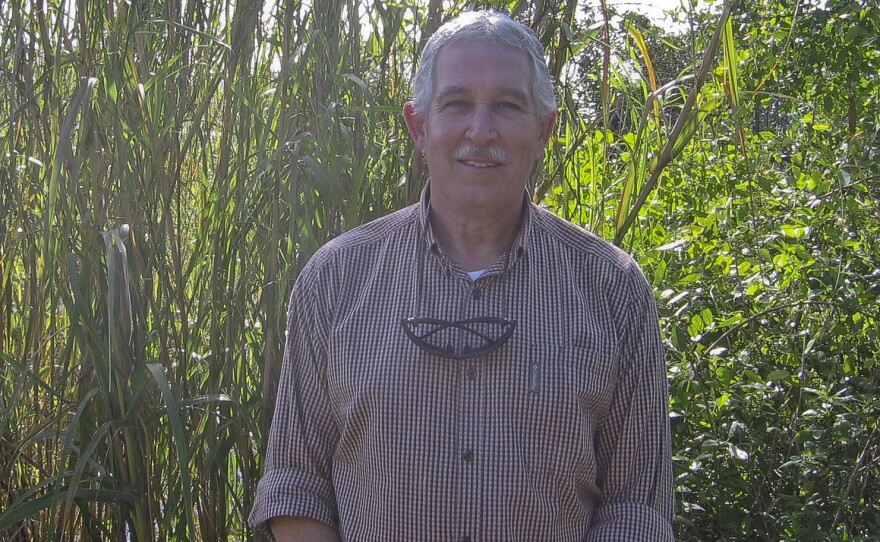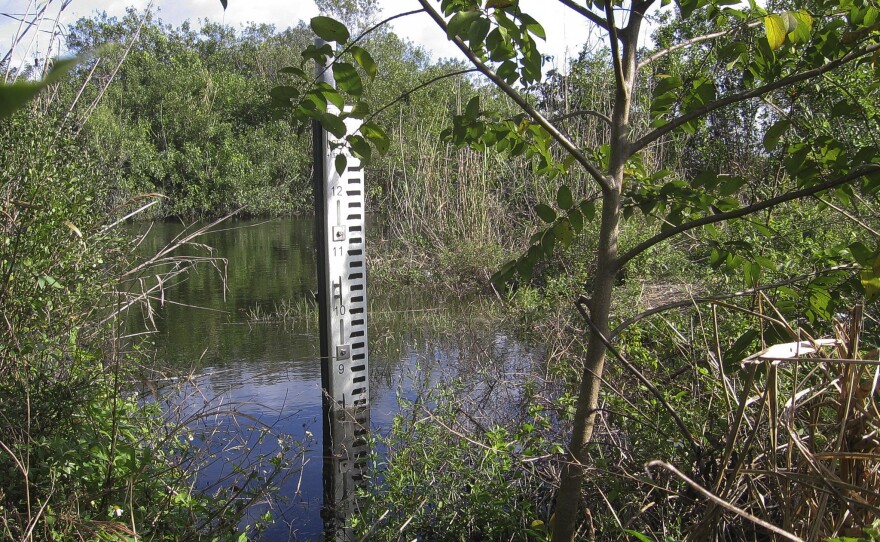

When people talk about Florida's Everglades, they often use superlatives: It's the largest protected wilderness east of the Mississippi River, and it's the biggest subtropical wetland in North America.
But it is also the site of a joint federal-state plan that is the largest ecosystem restoration effort ever attempted — one that is beginning to pay off after decades of work.
The delivery of fresh water to long-parched areas of Everglades National Park is considered a vital restoration. It's one of the world's largest freshwater wetlands — and the source of South Florida's drinking water supply.
Bob Johnson has been involved with Everglades restoration since he started work at the national park as a scientist three decades ago. As a hydrologist, he spends a lot of time thinking about water and how much flows through the park.
"On the western side, we're at about 10.3 feet, and if we walk over here to the eastern side, water level on this side is about 7 1/2," he says. "So you've got almost a 3-foot difference in water levels."
The difference is because of a road built through the heart of the Everglades nearly 90 years ago — U.S. Highway 41, the main thoroughfare connecting Tampa to Miami, also known as Tamiami Trail.
It's a road with a lot of history. First proposed in 1915, it took 13 years and a reported 3 million sticks of dynamite to complete. It also inspired a foxtrot sung by crooner Gene Austin.
Jon Ullman, with the Florida chapter of the Sierra Club, curated an exhibit on the road's history for the Coral Gables Museum.
"This was all lime rock. So, first you have to blast the lime rock, and then you create the roadbed from there. And you also use the lime rock to build the levee to hold back the water," Ullman says.
Although it was built as a road, it soon became apparent that Tamiami Trail was also a dam, blocking water that flowed from Lake Okeechobee south through the Everglades to Florida Bay.
Areas of Everglades National Park that used to be wet year-round started to dry out for months at a time. Over decades, Johnson says, a key part of the ecosystem dried up — organic peat soils.
"As the peat soils disappear, the vegetation community changes. We lose the food source for small fish and macroinvertebrates," Johnson says. "We don't have the buildup of the algal communities we had historically that are kind of the base for the food chain here."
On the north side of Tamiami Trail, a canal and a system of levees still hold back most of the water that otherwise would flow south through the park's sloughs and sawgrass marshes.
Recently, after a section of the highway was removed and elevated, a small amount of water began flowing south into an area for the first time in decades. Once a second bridge is built and other projects come online, the volume that flows into dry areas of the park will more than double.
"So you won't see this artificial canal and the very rapid flow," Johnson says. "You'll see very slow flow through the marsh back the way it's supposed to be: the river of grass."
When it's complete around 2030, the $18 billion Comprehensive Everglades Restoration Plan is expected to return nearly three-quarters of the flow the park received before the canals and the Tamiami Trail.
That will help restore the ecosystem in the park's 1.5 million acres — but the Everglades once covered more than double that area. It will be a man-made, engineered solution with pumps and reservoirs.
But Dawn Shirreffs with the Everglades Foundation says the Everglades will never be what it once was.
"We've lost about half of the natural ecosystem. We'll never get that half back. It's developed," Shirreffs says. "Most of us are living on land that was formerly Everglades. But we can stop hemorrhaging the existing Everglades."
Johnson is pleased that all the money and work are beginning to produce results. Another key part of the restoration, the Central Everglades Planning Project, could begin delivering a lot more water within a few years — by 2020, he says.
"That will be a big benefit here. And that's not very far away — 2020 is certainly ... in my career. I've been here 32 years. But I can last that long," he says.
Ecosystem restoration is not for the impatient. It's work measured not in years, but in decades. With climate change and sea level rise, Everglades restoration has taken on new urgency.
Copyright 2016 NPR. To see more, visit http://www.npr.org/.






